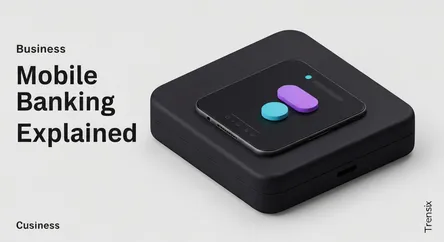Business
Mobile Banking Explained

Discover what mobile banking is, why it's trending, and how using banking apps on your phone is changing personal and business finance.
What is it?
Mobile banking refers to the use of a smartphone or other mobile device to perform financial transactions remotely. Rather than visiting a physical bank branch, users can access their accounts through a dedicated app or a mobile-optimized website. Common services include checking account balances, transferring funds between accounts, paying bills, and depositing checks by taking a photo. It essentially puts the power of a bank branch into the palm of your hand, providing 24/7 access to your finances from virtually anywhere.
Why is it trending?
The trend is fueled by convenience and the global ubiquity of smartphones. People expect instant access to services, and finance is no exception. Mobile banking eliminates the need to adhere to traditional banking hours or travel to a branch. The integration of features like biometric security (fingerprint and face ID), real-time transaction alerts, and budgeting tools has made it more secure and useful than ever. The COVID-19 pandemic further accelerated its adoption as consumers sought contactless ways to manage their money.
How does it affect people?
Mobile banking offers individuals and businesses unprecedented control and transparency over their finances. It saves significant time and provides real-time insights into spending habits, helping users make more informed financial decisions. For many, it's a primary tool for budgeting and saving. However, this shift also brings challenges, including heightened cybersecurity risks and concerns about a 'digital divide,' where individuals without access to modern technology or reliable internet may be excluded from essential financial services. It fundamentally changes the customer-bank relationship to be more digital and immediate.